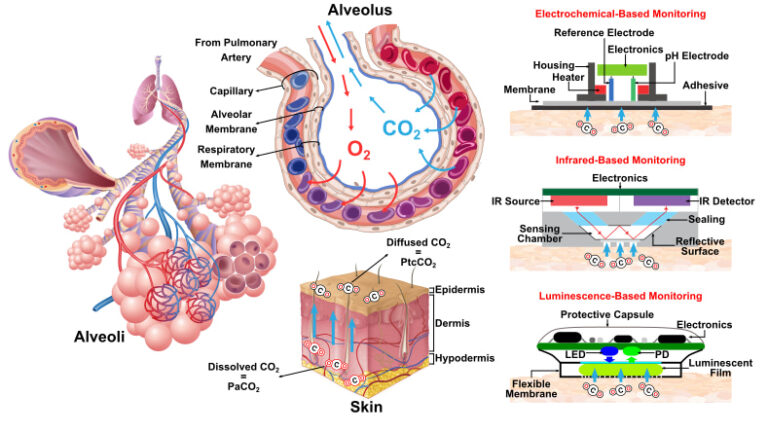Wearable smart health applications aim to continuously monitor vital physiological parameters without interrupting patients’ daily routines, eliminating the need for invasive procedures like blood sampling for lab tests. For instance, partial pressure of arterial carbon dioxide, crucial for assessing respiratory and acid-base balance, is typically measured invasively from arteries, limiting its continuous monitoring to clinical settings. While noninvasive methods like transcutaneous carbon dioxide monitoring exist, they are largely confined to intensive care units and require bulky bedside equipment. However, recent advancements in luminescence sensing present a promising avenue for integrating this technology into wearable devices, enabling continuous remote monitoring of ventilation efficacy.
This paper presents a thorough overview of sensing techniques and implementation strategies for transcutaneous carbon dioxide monitoring. To provide the reader with the fundamental concepts of these techniques, we explore three sensing approaches: electrochemical, non-dispersive infrared, and luminescence-based methods, which are currently employed in transcutaneous carbon dioxide monitors. We classify both contemporary and emerging transcutaneous monitors based on their sensing principles and conduct a detailed examination, assessing various properties such as size, response time, calibration frequency, and ease of use. Given that contemporary monitors utilizing electrochemical sensing are primarily designed for clinical bedside applications, recent advancements in sensing technologies, namely non-dispersive infrared, and luminescence-based monitors, offer alternatives. Our review highlights how these monitors address some of the issues of contemporary monitors and offer promising solutions.

